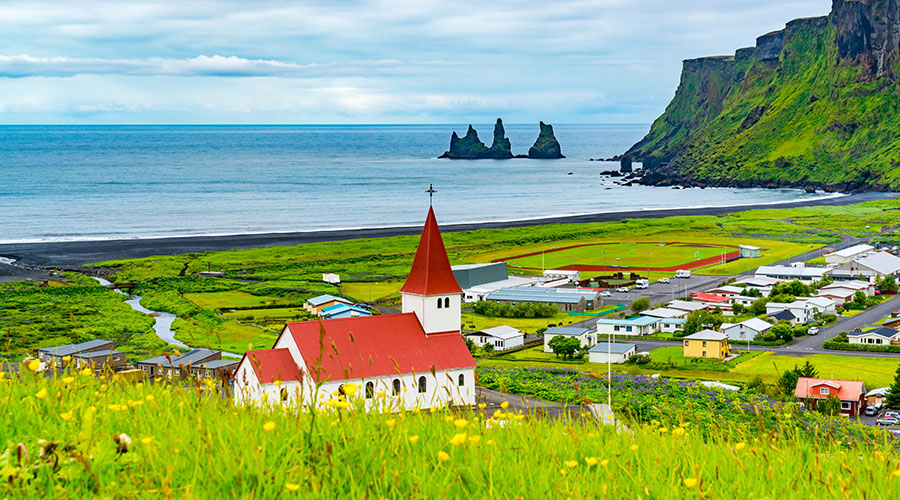
The Best Time of Year to Visit Iceland
The months of June and July are the perfect time for photographers and outdoor adventurers to visit Iceland since the weather is warm (that means around 57 degrees Fahrenheit, 13 degrees Celsius). This is when Iceland experiences its midnight sun, so expect to have a hard time sleeping for a day or two until you adjust!
It’s often said that you can experience all four seasons in a single day in Iceland, so no matter what time of year you choose to go, be sure you’re prepared with lots of layers and gear to protect you from whatever mother nature throws your way in this glorious place.
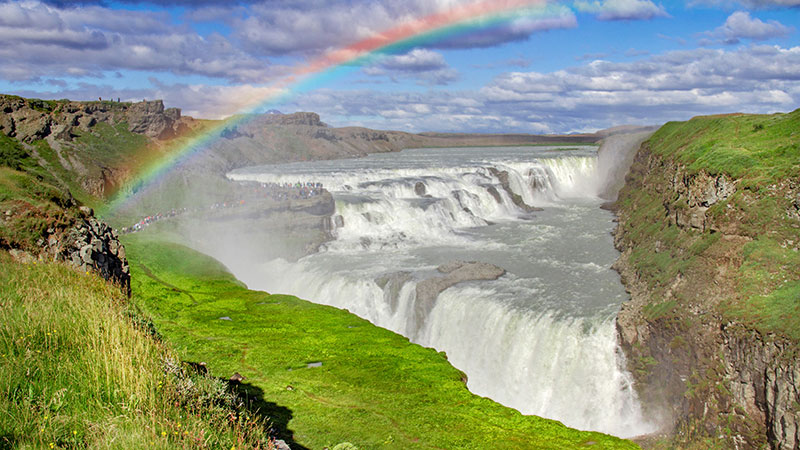
The Coldest Months in Iceland
December through February are the coldest months in Iceland, when temperatures can reach as low as -22º Fahrenheit (-30º Celsius). There’s no need to avoid traveling, but make sure you bring enough thermal layers to keep you warm.
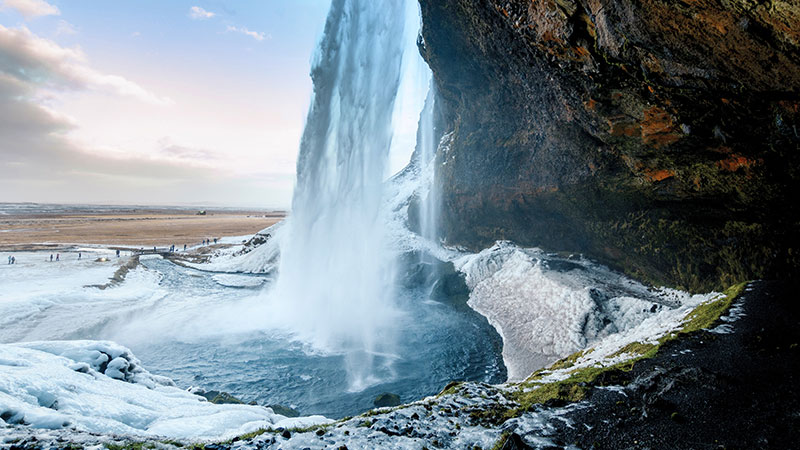
The Best Time to See the Northern Lights in Iceland
The Northern Lights are particularly strong around the equinoxes, making February through March and September through October the best times to see them, but they’re also visible from September through April.
From late November through December and January expect short, dark days in Iceland, with only about 4 – 5 hours of daylight per day. This is great for viewing the Northern Lights, but doesn’t leave a whole lot of time for exploring outdoors.
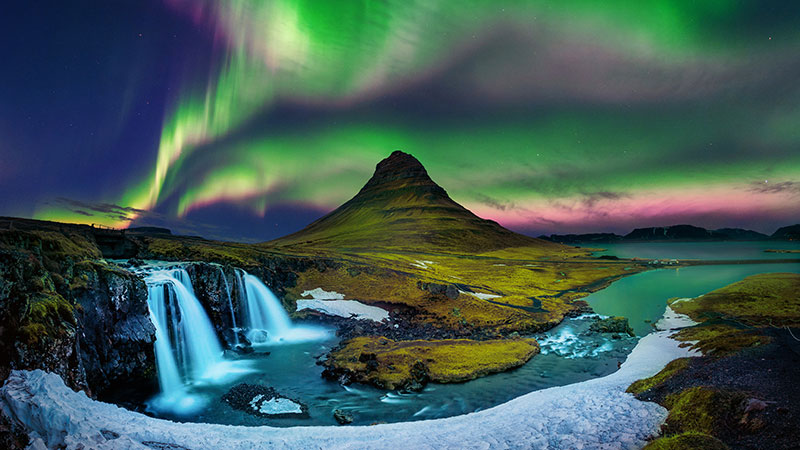
Iceland Weather By Month
Iceland Weather in January
Given that January is one of Iceland’s darkest months, it should come as no surprise that it’s also one of the coldest, with an average temperature of about 31°F (0.5°C). The upside? It’s one of the best times to see the northern lights, and the snow is beautiful.
Iceland Weather in February
Be prepared for anything during February in Iceland — that means rain, wind, snow, ice, sunshine, and everything in between. The monthly average temperature is about 34º F (1º C).
Iceland Weather in March
It’s still winter in Iceland during March, with average temperatures hovering around 32º F (0º C), but expect things to warm up a bit as the daylight hours increase from about 10 to 13 hours by month’s end.
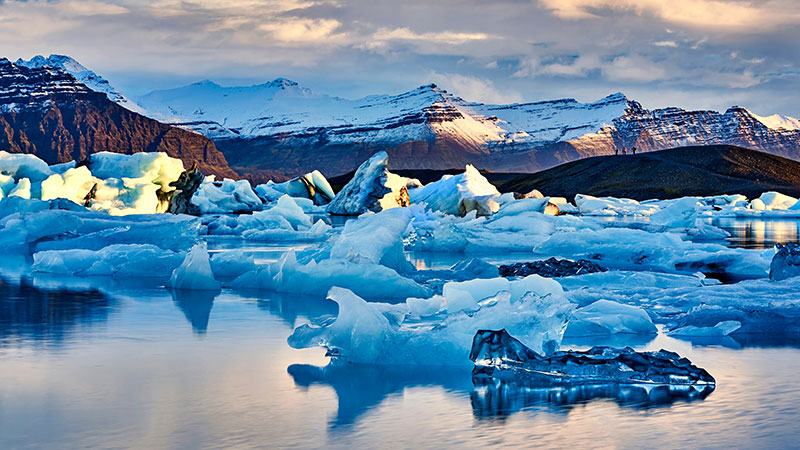
Iceland Weather in April
April brings milder temperatures in Iceland with the average high around 44º F (6.8º C). Expect less precipitation overall and over 16 hours of daylight as the month comes to a close.
Iceland Weather in May
Things start warming up in May, and by month’s end you can expect average highs to reach around 53º F (11º C) with about 20 hours of daylight! While it usually stops snowing in May, expect a range of weather, from sun and wind to rain and hail.
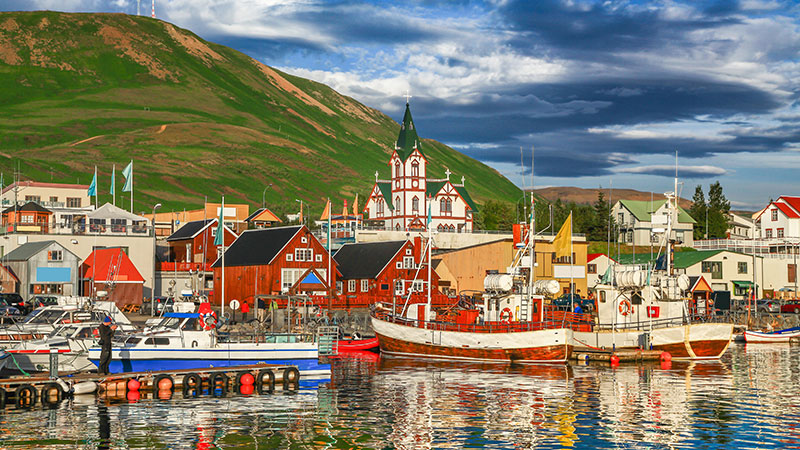
Iceland Weather in June
With daily average temperatures consistently above 50º F (10º C) and long daylight hours, June brings some of the most favorable weather of the year in Iceland. You can still count on the weather to be somewhat unpredictable, but with so many hours of daylight there’ll be plenty of opportunities to go out and explore.
Iceland Weather in July
July is one of Iceland’s warmest and driest months, with average temps ranging between 50º – 59º F (10º – 15º C). The midnight sun will be in full effect, with about 20 hours of sunlight per day.
Iceland Weather in August
In August, the nights will start getting darker and the days will be mild and sunny with occasional rain and temperatures gradually starting to fall by month’s end. Expect temperatures to range between 50º F (10° C) and 70° F (20° C).
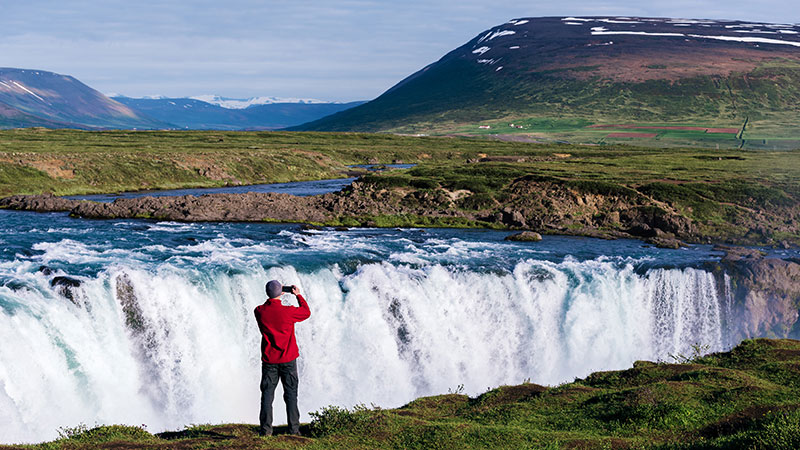
Iceland Weather in September
In September the Icelandic summer starts to fade, ushering in autumn and cooler, though still mild, temperatures ranging from about 41°F to 50°F (5°C to 10°C). Expect some rain and around 11 – 14 hours of daylight.
Iceland Weather in October
October brings some relatively unpredictable weather to Iceland. While the average daily temperature is around 42°F (5.4°C), it’s not uncommon for it to get much cooler (dipping below freezing) and considerably warmer (approaching 60º F (about 15ºC).
Iceland Weather in November
Expect cooling temperatures and a mix of rain, wind, snow, and generally wet and chilly weather in Iceland in November. The average temperature in November ranges between 33º – 46º F (1º C – 8º C) and there are only about five hours of sunlight per day by month’s end.

Iceland Weather in December
Not surprisingly, December is one of Iceland’s coldest months — not to mention windy and quite dark! The temperature usually hovers around freezing and precipitation is at its heaviest, but the northern lights do make their appearances and holiday lights keep things cheerful.
What’s the Best Season to Travel to Iceland?
Iceland in the Summer
Long summer days, midnight sun, nicer weather, and lush green scenery are among the big benefits of visiting Iceland in summer. The downside is that it’s also tourist season and that means higher prices and lots more people. If that doesn’t bother you, summer is a lovely time to visit.
Temperatures vary by region, averaging around 50º – 55º F (10º – 13º C) in the south and 59º – 65º F (15º – 18º C) in the north.
Iceland in the Fall
Iceland is absolutely breathtaking in the fall. The light is golden and the trees change color, while temperatures can range between about 30º to 50º F (-1º – 10º C). It’s got all the coziness you’re looking for, but the weather can be particularly stormy and unpredictable at this time of year, so pay attention to weather advisories before heading out on a nature trek.
Iceland in the Winter
If you love the quiet beauty of a blanket of fresh snow, then Iceland in winter is for you! It’s pretty cold, but the beautiful light from both the sunrise and sunset bouncing off the snow as well as the northern lights more than make up for that. Dress for the weather and you’ll be just fine.
Winter temperatures in Iceland average around 32º F (0º C), but it can get as low as 14º F (-10º C). The Icelandic winter is relatively mild for its latitude, but it can be very windy with rain, sleet, and snow to be expected.
Iceland in Spring
Springtime in Iceland is pretty great. The days are longer, the weather is warmer, and the summer time crowds and price hikes have not yet arrived. Temperatures average between about 39º – 54º F (4º – 12º C). The roads that may not have been passable in the winter will be open for the most part, but keep in mind you’ll still need a 4x4 to get around.
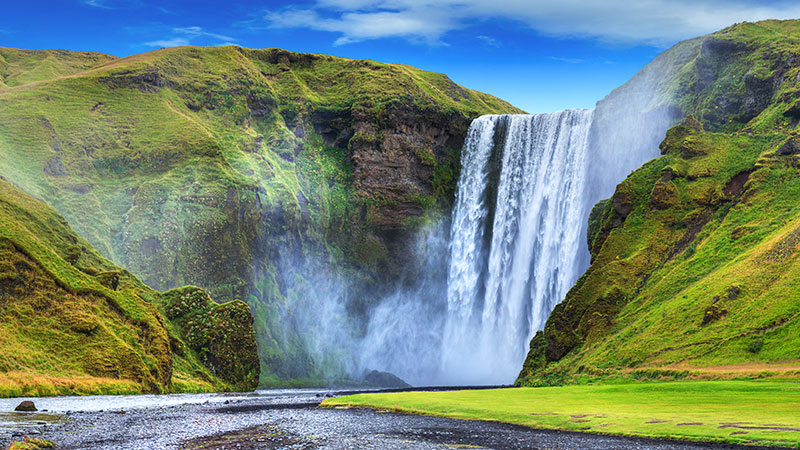
Explore Collette’s Iceland Tour Packages
While there’s no “best time” to visit Iceland, being prepared and knowing what to expect will help make any trip a success. And no matter what time of year it is, when you travel with Collette, you can count on expert guides to help you make the most of your trip with unique cultural experiences, and insider knowledge about the best spots for food, entertainment, adventure, and just about anything else on your list.
Ready to start planning? Check our Icelandic tours and find the best fit for you!

